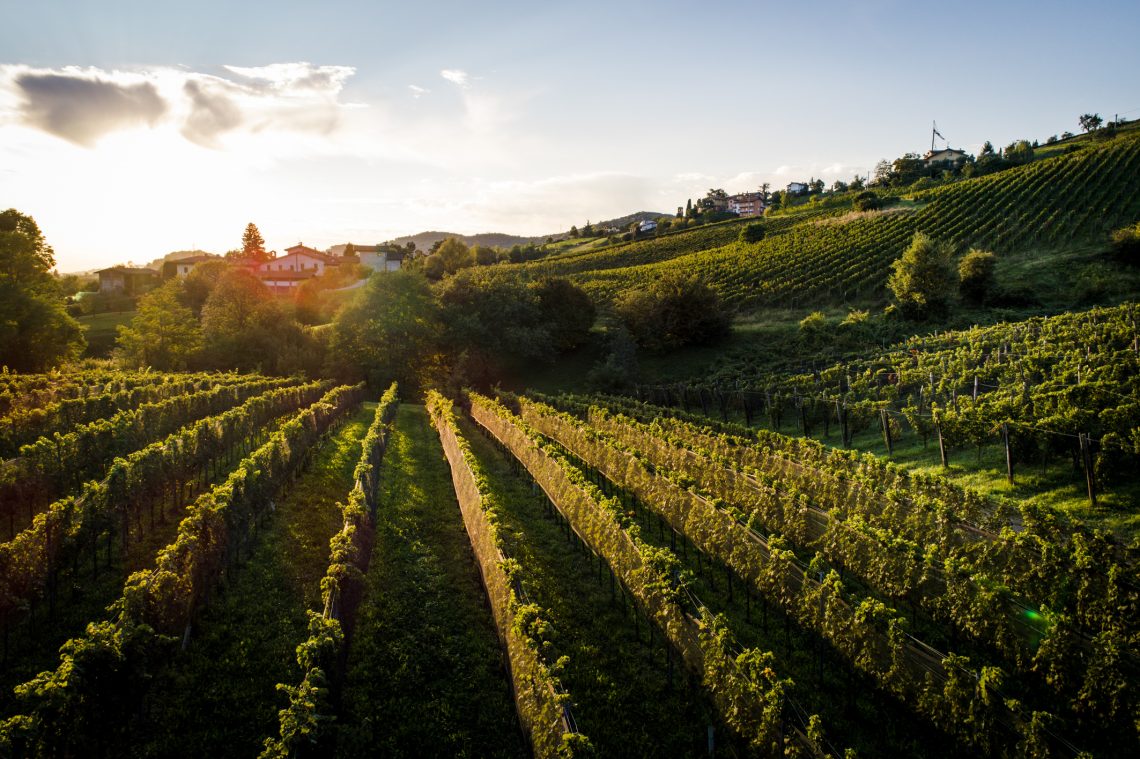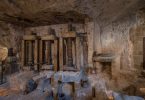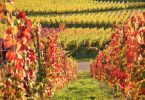The Wolf Post offers a professional service with free access, without subscription.
For this reason, a donation would also be a sign of appreciation for our work.
Valcalepio is a territory rich in history and traction in the province of Bergamo.
Within this area, surrounded by castles, churches and abbeys, nature predominates, especially in the expanses of vineyards and olive groves that give shape to a suggestive landscape.
A land where natural scenery intertwines with some of the best food and wine proposals of the place.
The Valcalepio Wine and Flavors Route of Bergamo was created to protect and promote the products and scenarios of a suggestive reality whose fruits give excellent quality wines.
Let’s find out more from the words of Enrico Rota, President of the Valcalepio Wine Route and flavors of Bergamo.
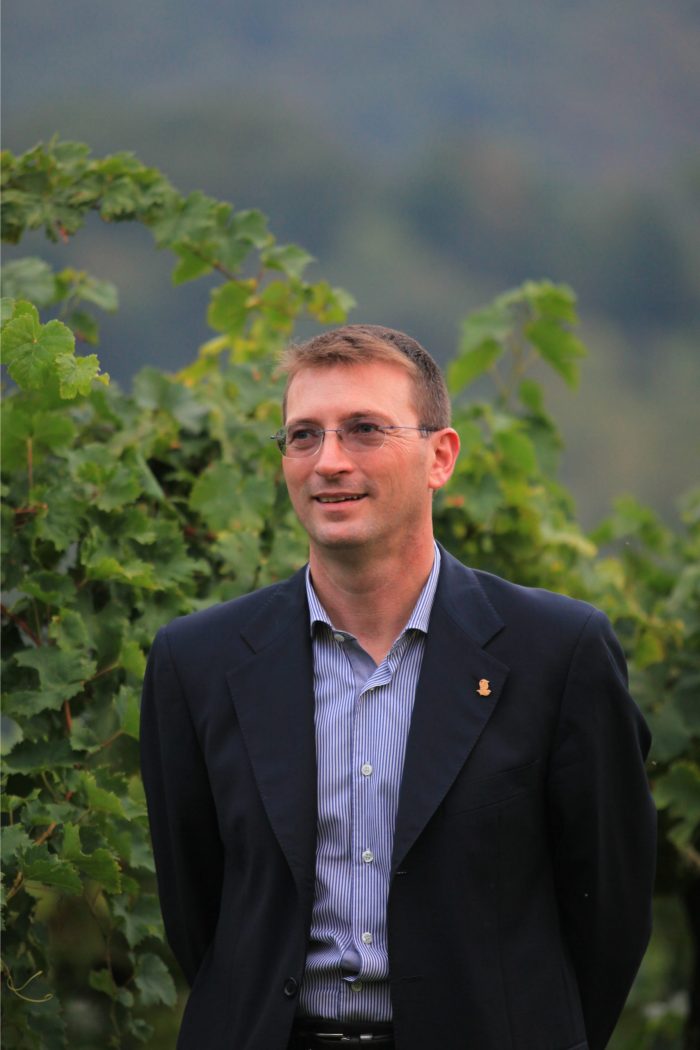
©Strada del Vino Valcalepio e dei sapori della Bergamasca- Enrico Rota
Since your Association was born, which goals have you achieved and which are still to be achieved?
From a formal point of view, the Strade del Vino are part of the national law n. 268 of July 1999, which postpones their activities and their functioning in the territory to regional provisions. The Valcalepio Wine and Flavors Route of Bergamo, is a voluntary non-profit association, was established on May 25, 2001, accredited in the Lombardy Region, and recognized by Decree of the Director General of the D.G. Agriculture of 21 February 2002 n. 2269.
The Valcalepio Wine and Flavors Route of Bergamo is, then, among the members, as well as founder, of the Federation of Lombardy Wines and Flavors Roads, established on 29 October 2002.
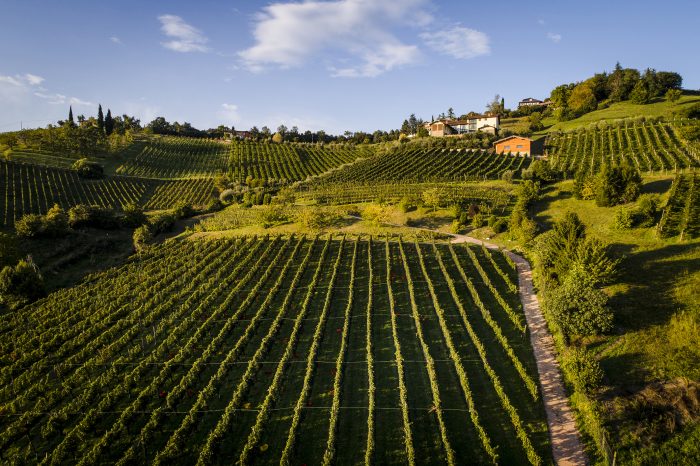
©Strada del Vino Valcalepio e dei sapori della Bergamasca
Through which services/activities do you promote the dissemination of the Valcalepio Wine Route?
The Strada cannot be considered as an organization that looks exclusively at tourism promotion but, rather, as a subject of territorial marketing that focuses on the aggregation and representation of the various promotional souls present in the area, maintaining and enhancing every single autonomy. Reason for which, at the base of the services/ activities, we find, first of all, a strong union operation (see, for example, the fact that under this single sign, the two consortia for the protection of wine of Bergamo, Valcalepio and Moscato di Scanzo, as well as the other Wine Routes present), then, of the tools useful to disseminate the activities of all the members such as the institutional website, the social networks and the various publications present in the tourist offices.
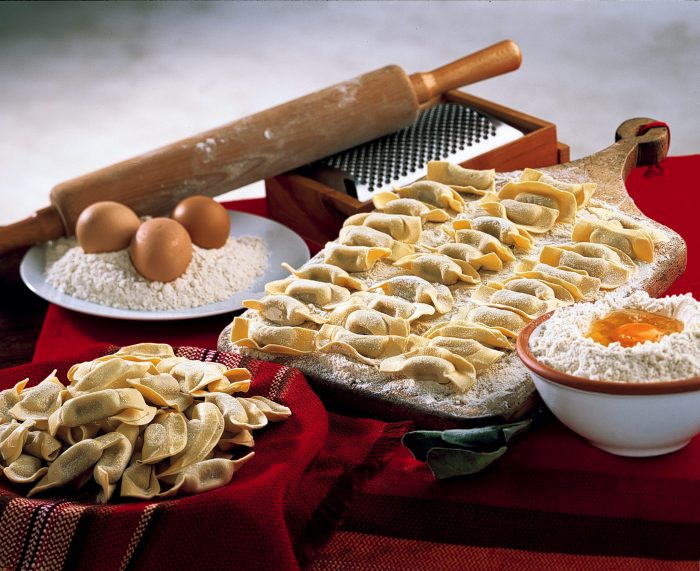
©Strada del Vino Valcalepio e dei sapori della Bergamasca
What are the peculiar characteristics of the territory and its wines?
The province of Bergamo is representative of the entire enographic supply chain (1 DOCG, 2 DOC and 1 IGT), with a quality wine production (Moscato di Scanzo docg, Valcalepio doc, Terre del Colleoni doc and Bergamasca igt), capable of winning over consumers Worldwide. The Bergamo area boasts numerous typical products: cheeses (with the largest number of DOP productions in Italy), meat, salami, stuffed pasta (starting from casoncello), beer, honey, jams, bread, sweets, oil, fruit and vegetables.
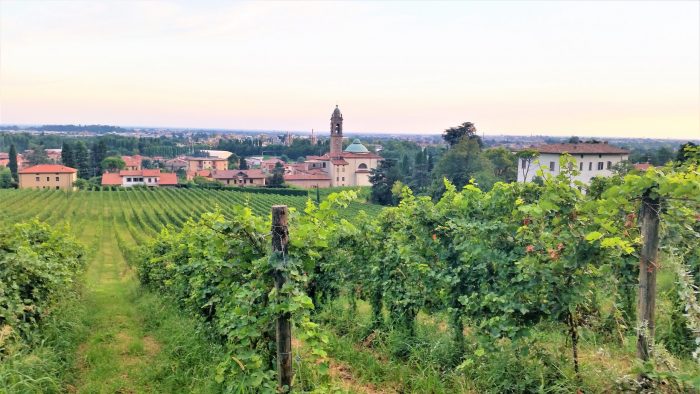
©Strada del Vino Valcalepio e dei sapori della Bergamasca
Can you briefly describe the route and which territories of cultural and wine tourism interest it crosses?
To date, we have thought of three itineraries dedicated to wine: the red path of the convents, the green path of the hills and the blue path of the lakes. These routes are proposed as a mix of landscape resources, art sites, monuments, palaces, churches and museums of popular culture, which together with good food and good drink will allow tourists to take home a piece of the area they have visited.
Red Route: Leaving the A4 motorway at Capriate, continue up to Sotto il Monte Giovanni XXIII, at the foot of Mount Canto, where you can visit the birthplace of Pope John and with a short path, go up to the famous abbey of S. Egidio, a jewel of Romanesque art from the 10th century. Go back down to the plain as far as Villa Traversi in Valtrighe, then continue towards Mapello and Ambivere as far as the road to Lecco. This leads to Pontida, famous for its abbey with an adjoining Benedictine monastery, founded in the 11th century. Then, retracing the state road towards Bergamo for about 4 kilometers and then turning left for Barzana up to Almenno S. Bartolomeo, you can visit, downstream from the village, on the bank of the Tornago stream, one of the most evocative Romanesque buildings of the whole Lombardy: the temple of S. Tomè. Crossing the stream you reach Almenno S. Salvatore. Here, you can admire the churches of S. Nicola, S. Giorgio and S. Salvatore and the sanctuary of the Madonna del Castello. Continue towards Almè-Bergamo passing through Petosino and, therefore, return to the A4 motorway.
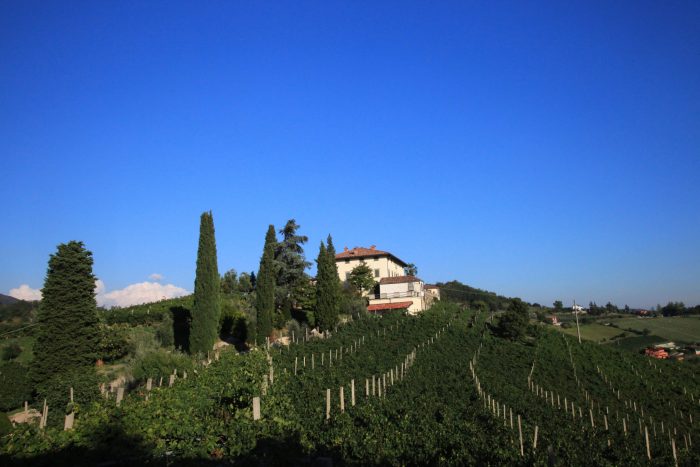
©Strada del Vino Valcalepio e dei sapori della Bergamasca
Green Route: Leave the A4 motorway in Bergamo to reach the upper part of the city with the walls and Piazza Vecchia. In the lower part of the city, the Pinacoteca dell’Accademia Carrara is worth a visit. Then take the road to Scanzorosciate passing through Villa di Serio, then continue to Torre de ‘Roveri. We go up to Colle dei Pasta which offers a splendid view of the plain below. Then go down to Cenate Sopra where you can visit the natural reserve of Valpredina managed by WWF. Then proceed to S. Paolo d’Argon where you can visit the Benedictine monastery and the Romanesque church of S. Pietro delle Passere. Continuing to Trescore Balneario you can admire Villa Suardi and the adjoining Oratory of S. Barbara with the splendid fresco of the Christ of the Vineyards by Lorenzo Lotto, descend to Gorlago and from here to Carobbio degli Angeli, where you can admire the splendid castle. Return to the motorway in Grumello del Monte or, returning to Bergamo, in Seriate.

©Strada del Vino Valcalepio e dei sapori della Bergamasca
Blue Route: Leaving the A4 motorway at Ponte Oglio, follow the state road to Sarnico passing from Tagliuno to Castelli Calepio, where you can visit the Castello dei Conti Calepio, the Palazzetto Carolingio, the church of S. Lorenzo and the renovated medieval village. Continuing towards Credaro, a short stop allows you to visit the church of S. Giorgio, which houses the frescoes by Lorenzo Lotto, and that of the Saints Fermo and Rustico; you can also admire Castel Montecchio and Castel Trebecco. Before reaching the town of Sarnico, the pearl of Sebino, an important commercial and tourist center renowned among other things for the two magnificent Liberty-style Faccanoni villas, you can visit the church of S. Nazario in Castione. Returning towards Villongo, following the Uria valley, we reach Adrara S. Martino, site of prehistoric and Roman settlements and a medieval castle. For Foresto Sparso it is possible to visit the sanctuary of S. Giovanni delle Formiche. You go back down to Villongo with the Romanesque church of Sant’Alessandro and the parish church that houses a fine statue of the Madonna del Fantoni, and then go up the Gandosso Valley. From here continue to Grumello del Monte with a stop at the Gonzaga castle and the hamlet of San Pantaleone with ancient rustic houses. From here it is possible to return to the A4 motorway.
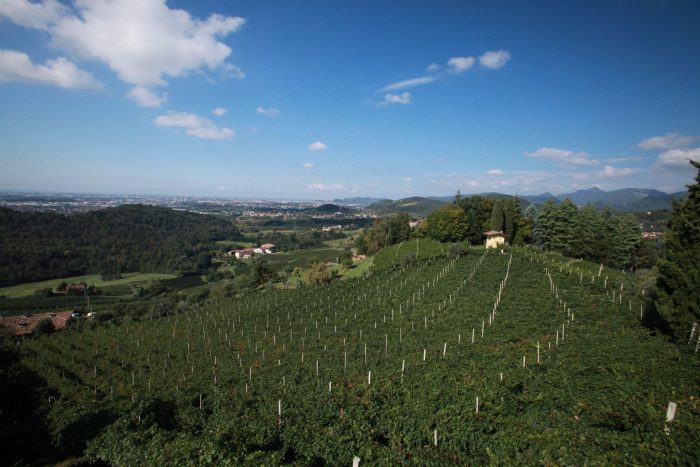
©Strada del Vino Valcalepio e dei sapori della Bergamasca
Why choose the Valcalepio wine route?
From a strategic point of view, the Routes must be considered as an opportunity for the development of the territory and therefore, first of all, as a strong tourist-cultural aggregation operation capable of creating and maintaining a relational and synergistic network between actors over time, belonging to different economic categories. At the center of this network, food and wine products and their producers must be positioned, flanked by those who provide other services (hospitality, crafts, commercial activities, entertainment etc.), in order to allow users to encounter a rich offer, complete and integrated. In this key, the enhancement of products, producers and places of production is decisive, elements that if combined and adequately enhanced can represent a valid, and not replicable, factor of attraction. The Strada is the only association that can use its agricultural products as well as hospitality, fused with art and culture, to promote the area.


